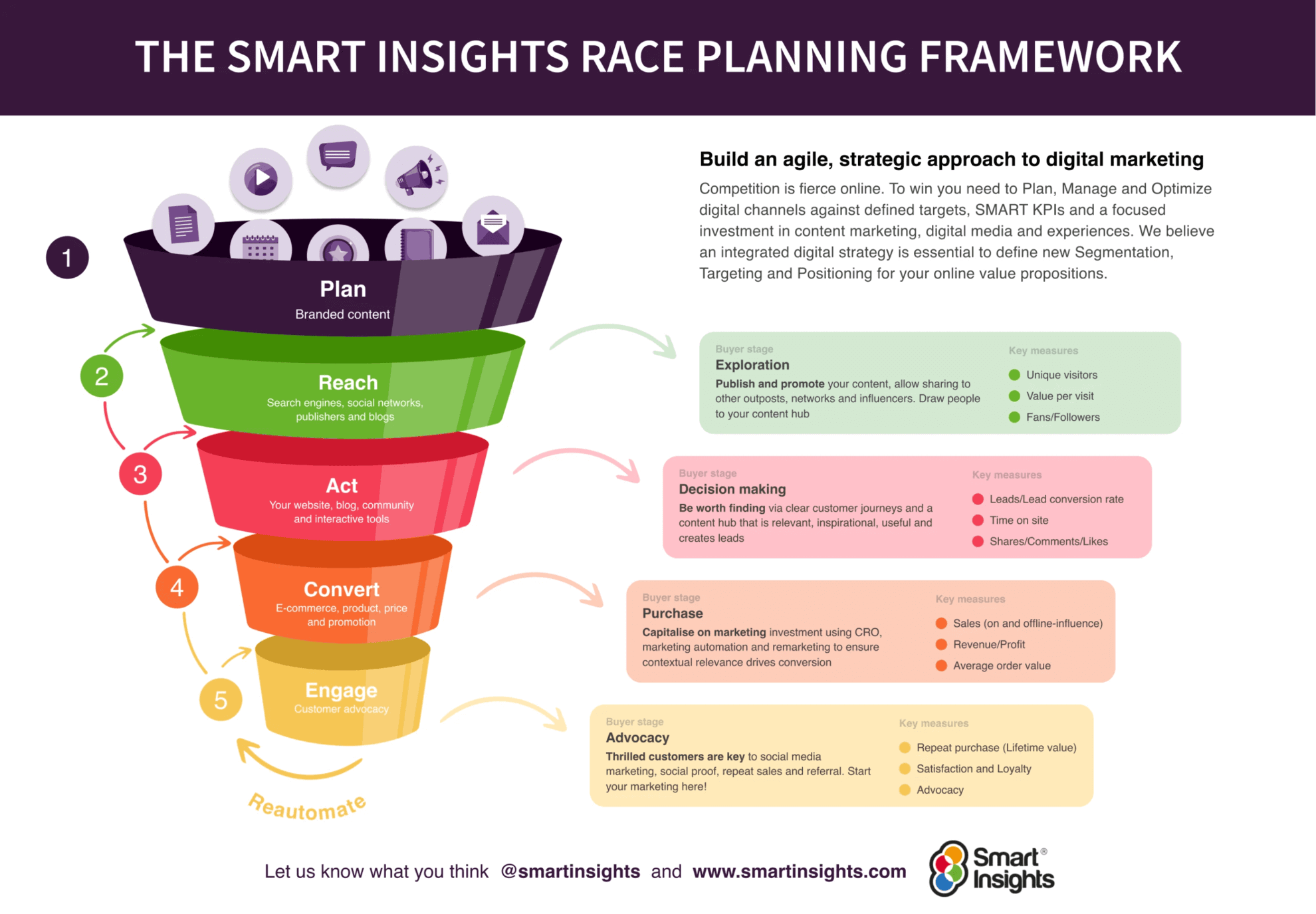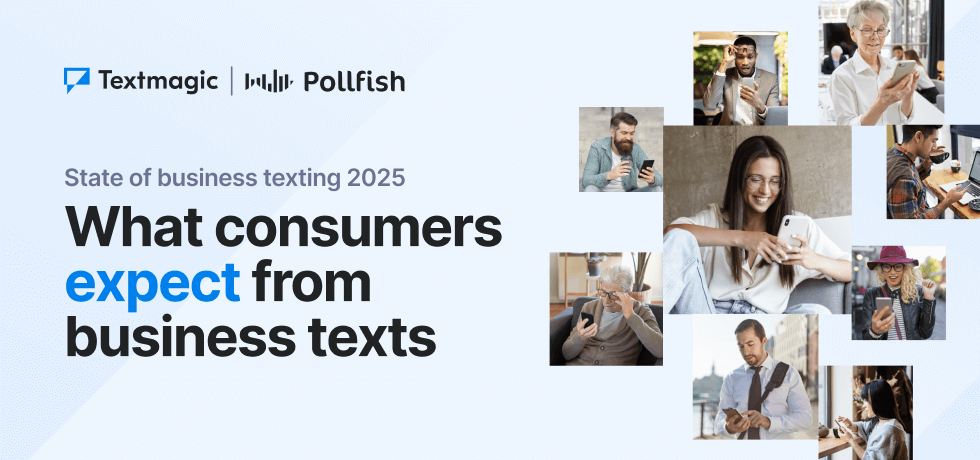
Offering a great product or service is no longer enough in 2024. Customers expect personalized experiences and meaningful interactions with the companies they do business with. This is why customer engagement models are essential to building a thriving business.
Companies must use different engagement models catering to their customers’ unique needs and preferences to achieve this.
This article will explore nine customer engagement models and provide insights on maximizing each to boost customer satisfaction and loyalty.
What are customer engagement models?
A customer engagement model is a framework or strategy organizations use to interact with customers, build relationships, and encourage them to become loyal.
This kind of model helps your business create a positive customer experience at every stage of the customer journey, from the first point of contact to the final purchase.
According to a Salesforce survey, 80% of customers say a company’s experience is as important as its products or services. This highlights why customer engagement is important in building brand loyalty and driving above-average business results.
Stages in customer engagement and the customer journey
These are the main engagement stages related to the different steps of the customer journey:
- Unaware
- Problem aware
- Solution aware
- Product aware
- Fully aware
Each customer engagement model is organized according to the stage of the customer in their journey. This will make it easier to adapt your marketing strategy and target your clients with the right materials.
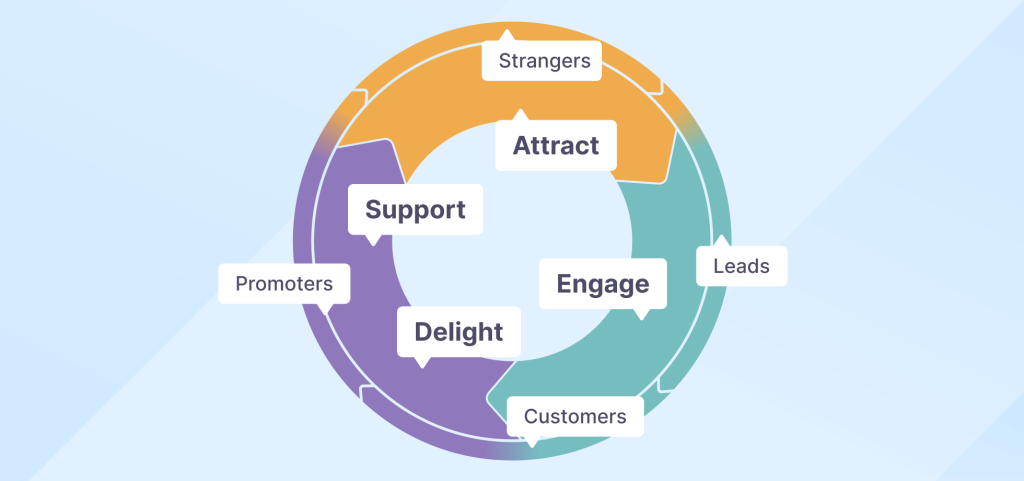
Here is an overview of the most common types of customer engagement models, organized by where your clients are in the sales funnel.
Unaware-stage engagement models
At this stage, the customer is unaware of your brand or your products or services. The main ways to engage your potential customers now include outbound marketing, influencer marketing, and content marketing.
1. AIDA model (awareness, interest, desire, action)
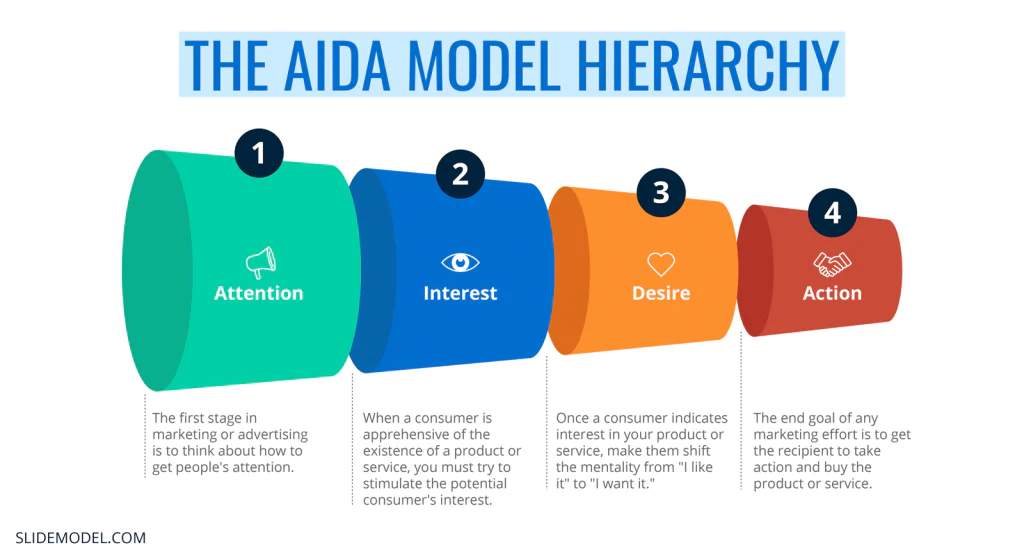
Image source: slidemodel.com
The AIDA model was designed to guide marketers in creating effective advertising campaigns. While it may have been effective in the past, it is now considered outdated and oversimplified.
Modern customer engagement models focus on a more holistic and personalized approach that considers the customer’s journey and individual needs and preferences.
Benefits
Drawbacks
Aman Chopra, marketing manager at Stallion Express, describes how you can put the AIDA model to work:
“I frequently use the AIDA model as one practical approach. A straightforward yet impactful quotation about this approach is: awareness leads to interest, which leads to desire, and finally, action.
I use this paradigm in my profession to direct our marketing communications. For instance, when launching a new service, we first capture awareness through eye-catching ads and engaging social media content. Next, we generate interest by sharing compelling stories about how our service solves specific problems for our customers.
We use case studies and client testimonials that demonstrate actual outcomes from happy customers in order to arouse desire. Lastly, we encourage action through apparent calls to action (CTAs), including time-limited deals or simple enrollment procedures.
Here is a basic template I use, which is based on the AIDA model:
- Awareness: Discover how affordable cross-border shipping can be.
- Interest: Engaging content or story.
- Desire: Customer testimonials or benefits.
- Action: Clear CTA (e.g., “Sign up now for a free trial!”)
This structured strategy increases the likelihood that our marketing initiatives will effectively connect with our target audience and encourage conversions.”
2. RACE model (reach, act, convert, engage)
Image source: smartinsights.com
Smart Insights popularized this digital marketing model through the essential phases of reaching, acting, converting, and engaging customers.
Benefits
Drawbacks
Aware-stage engagement models
During this stage, the customer is aware of your brand and your products or services but is not yet interested in purchasing. During this stage, you should use the following marketing strategies: retargeting, social media engagement, email, and SMS marketing.
3. AARRR customer engagement model
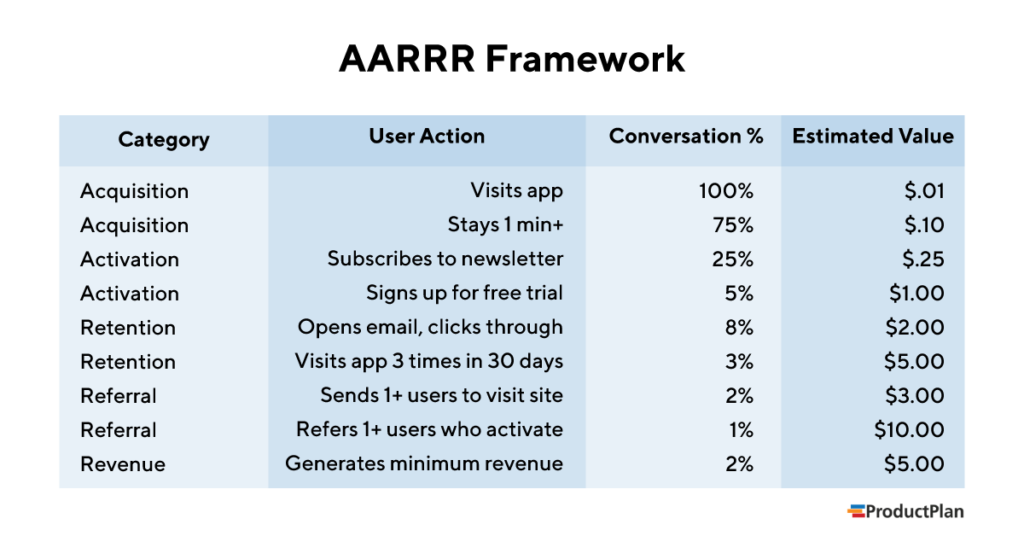
Image source: productplan.com
The AARRR engagement model is a framework businesses use to understand and optimize their customer engagement strategies.
It consists of five main stages — acquisition, activation, retention, referral, and revenue – representing the customer journey from initial contact to ongoing loyalty.
Benefits
- A comprehensive approach to customer engagement that covers all the stages of the customer lifecycle, from acquisition to retention to referral.
- Measurable customer engagement metrics make it easier to track progress and identify areas for improvement.
- A strong emphasis on revenue generation is important for businesses looking to grow and succeed in the long term.
- A focus on the needs and wants of the customer rather than the needs of the business — customer centricity.
Drawbacks
4. USP model (unique selling proposition)
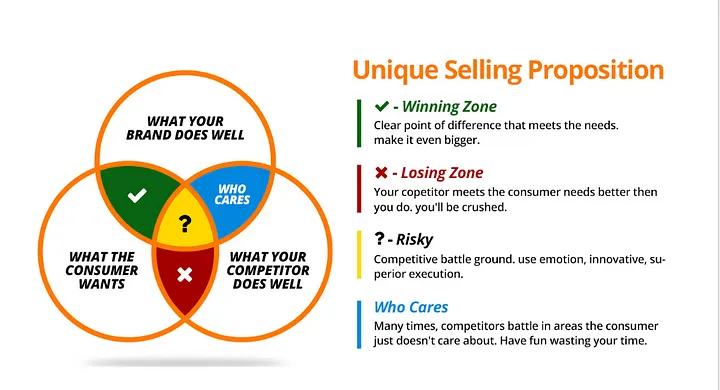
Image source: charmaintsf.medium.com
The USP customer engagement model is used by businesses to identify and promote their unique value — the feature or benefit that sets their product or service apart from competitors.
This model is focused on highlighting a product or service’s unique value proposition to attract and retain customers.
Benefits
- By focusing on ONE USP, you can develop clear, consistent messaging that resonates with customers.
- A strong USP can help you increase sales by communicating the value of their product or service in a way that addresses customer pain points.
- The USP model requires you to identify and prioritize customer needs, which can help you develop products and services that better meet customer exectations.
Drawbacks
Discovery and onboarding engagement models
During this stage, the customer actively seeks more information about your brand and your products or services. Engage them with live chats, onboarding emails, and detailed product demos.
5. High-touch model
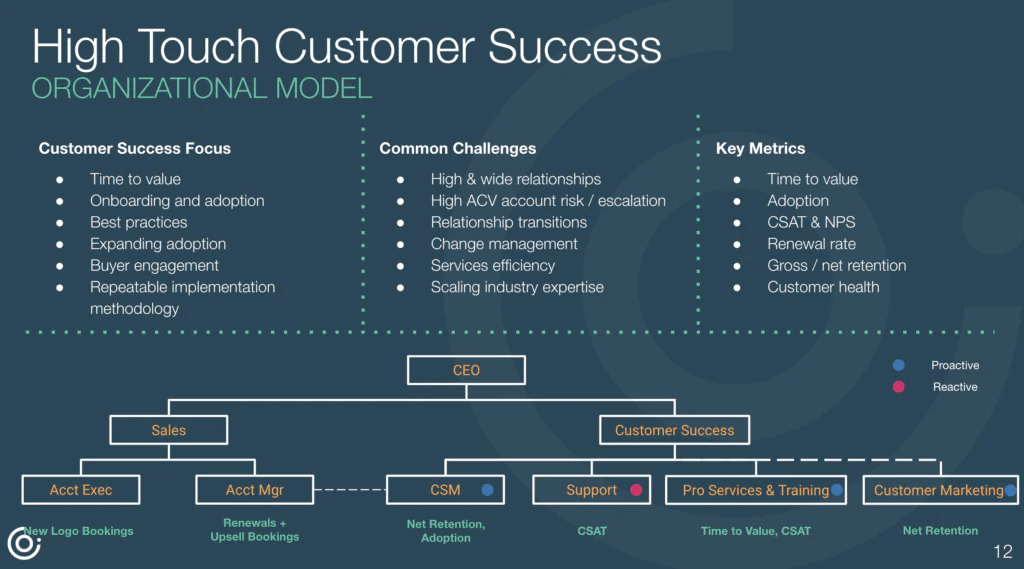
Image source: customerimperative.com
A high-touch model is a business approach that emphasizes personalized and customized interactions between a company and its customers.
In this model, the company seeks to provide high service and attention to each customer to build long-term relationships and loyalty.
Benefits
Drawbacks
6. Low-touch model
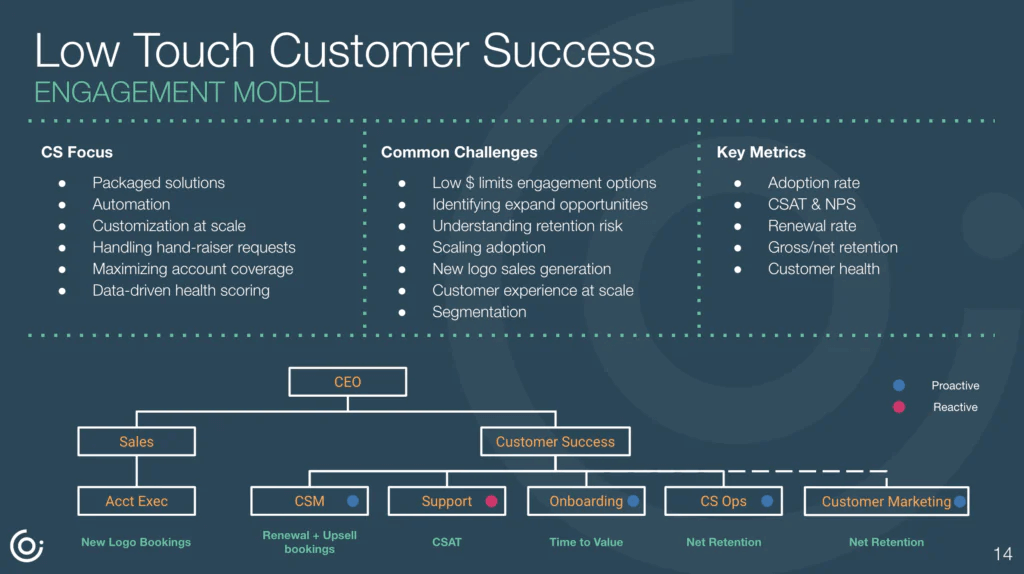
Image source: customerimperative.com
The low-touch model emphasizes minimal direct interactions between a company and its customers. In this model, companies aim to automate as much of the customer experience as possible, using technology and self-service options to reduce the need for human interactions.
These models are particularly well-suited for software-as-a-service (SaaS) companies because they allow businesses to scale their customer acquisition efforts without incurring significant overhead costs.
Rather than relying on a large team of salespeople to close deals, SaaS companies can use internal sales representatives or automated sales funnels to convert leads into paying customers. This approach complements the product-led growth optic many SaaS companies use to reduce their sales costs while still maintaining a high level of satisfaction.
Benefits
- By automating many aspects of the customer experience, you can save on labor and other operational expenses.
- The low-touch model can be more easily scaled as your company grows, as automated processes can handle more customer interactions.
- Automated processes can provide a consistent customer experience, reducing the potential for errors arising from human interactions.
- Processes that require zero human interaction can be faster and more efficient, thereby improving response times.
Drawbacks
Sam Speller, CEO & Founder of Kenko Tea, explains how he leverages the low-touch model:
“The low-touch model is one of the most critical aspects of our customer acquisition and engagement program.
The essence of this business model is to deliver exceptional customer service and information that enables consumers to decide for themselves. Our website has a strong focus on providing you with information, from detailed product descriptions to brewing guides and even matcha recipe ideas.
For instance, we published a comprehensive evergreen blog series about matcha grades, their distinctive taste, and preferred brewing techniques. These articles allow customers to educate themselves about matcha and pick the ideal matcha product for their needs without being pressed by a salesperson.
Having opted for the low-touch model, we’ve developed a dedicated following that values our education and openness. This method enables our customers to interact with our brand independently, which in turn results in increased trust and loyalty.”
7. Hybrid model
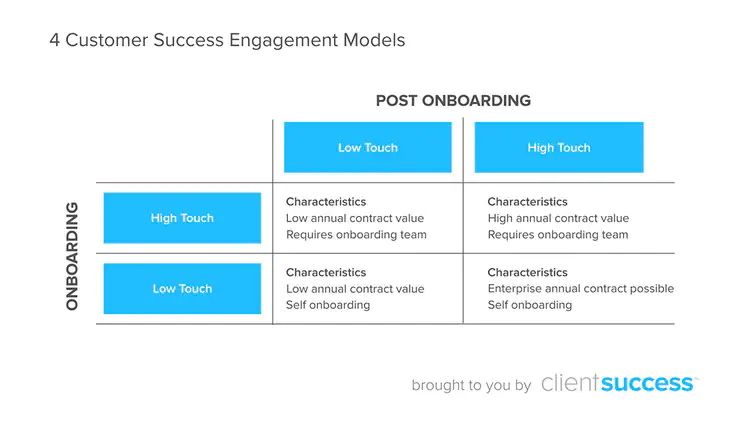
Image source: burkealder.com
The hybrid model combines elements of both the high-touch and low-touch models to create a customized customer experience. Companies seek to balance personalized attention and automation to meet each customer’s individual needs and preferences.
Benefits
Drawbacks
Post-onboarding engagement models
The customer has already purchased your brand’s products or services and is using them. The most effective ways to maintain their interest include loyalty programs, customer feedback requests, and extensive personalization.
8. Automated retention
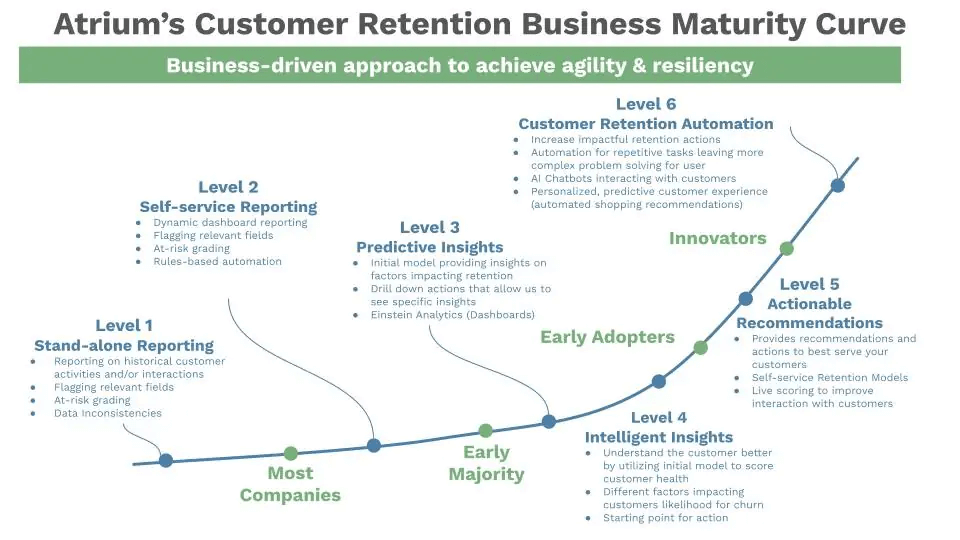
Image source: atrium.ai
The automated retention model helps businesses maintain customer relationships. It can drive repeat business through technology-driven processes that deliver timely, relevant messages.
Compared to traditional retention strategies, this model is ideal for companies aiming to nurture loyalty while cutting costs.
Benefits
- It allows you to consistently engage with your customers through targeted messaging, reducing churn rates.
- Automated systems can identify signs of customer dissatisfaction or inactivity and send retention-focused communications, such as special offers or surveys.
- They ensure that follow-ups such as loyalty rewards, satisfaction surveys, or renewal reminders are timely and consistent.
Drawbacks
9. CSM-driven model
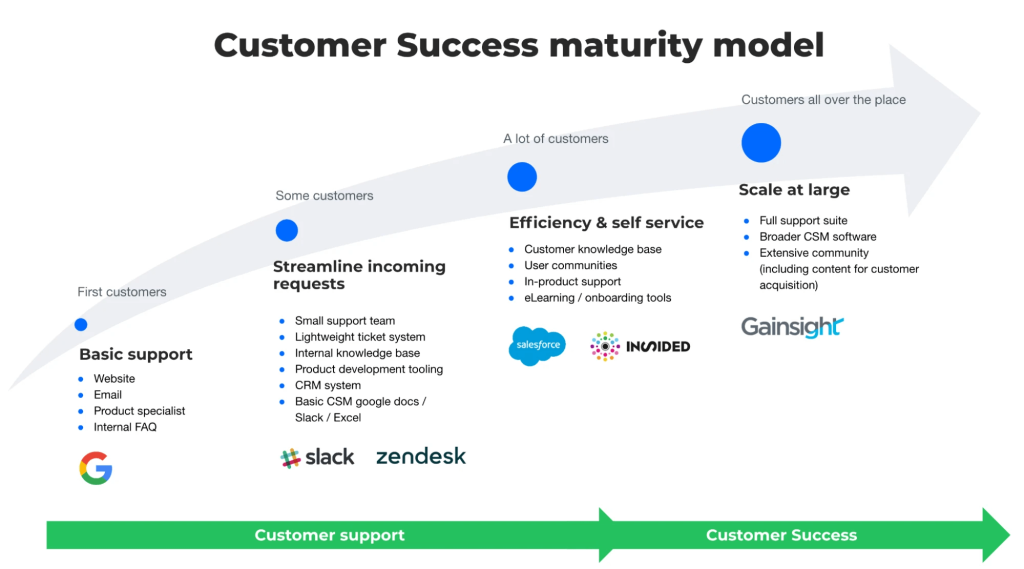
Image source: calendly.com
This customer engagement model ensures that customers achieve their desired outcomes when using a product or service.
Customer success managers (CSMs) work closely with customers to understand their goals and needs and develop strategies to help them succeed.
Benefits
- CSMs act as the main point of contact between customers and your company, ensuring a clear and effective contact channel.
- CSMs anticipate and solve potential problems before they occur, leading to a more proactive approach to customer service.
- By helping customers succeed, the CSM-driven model can increase revenue through customer loyalty, retention, and referrals.
Drawbacks
Customer engagement model template
This template outlines a straightforward approach to understanding customer preferences and needs. Use its actionable insights to create personalized strategies and improve engagement.
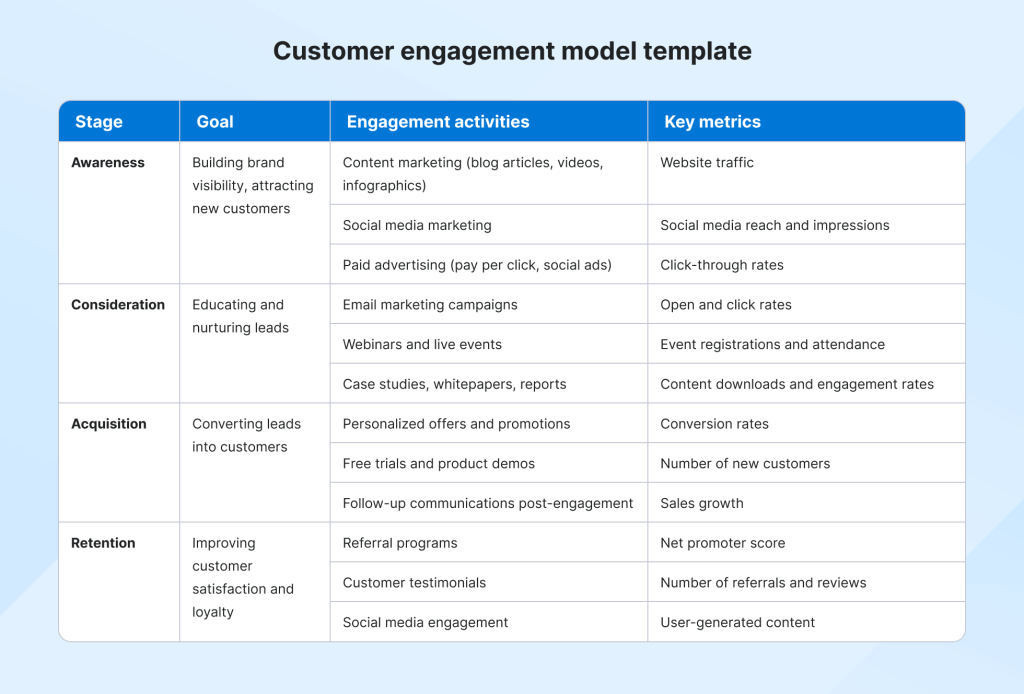
What’s your ideal customer engagement model?
By implementing one or more of the nine customer engagement models outlined in this article, you can foster deeper connections with your customers, enhancing their satisfaction levels.
From personalization and community building to co-creation and advocacy, every company can find the right fit for its target audience and build a loyal customer base to drive long-term success.
Stay tuned to our blog for more insights on turning customers into advocates!
Related articles
7 Mobile marketing best practices for small businesses
Mobile marketing is by far the best strategy you cou...
Successfully outsource customer service using 8 tips we tested ourselves
Poor customer service impairs user experience and un...
10 Simple tips to building a great small business website
To successfully run a small business, you need to fi...
Smishing uncovered: How to protect yourself from SMS phishing and fraud
At one point or another, you might have gotten one o...
2025 survey: 53% of consumers didn’t get a reply after texting a business
Texting isn’t dead, but it’s not being used properly...
